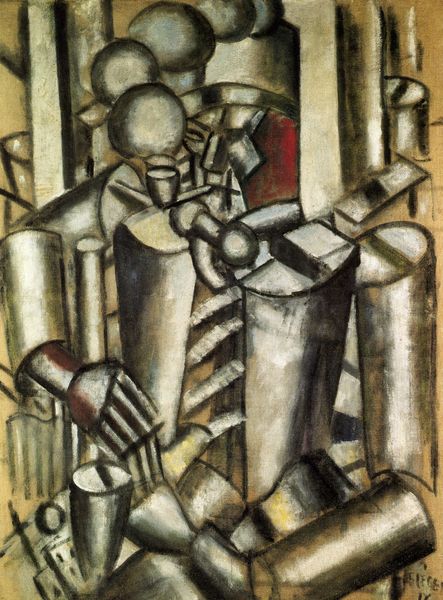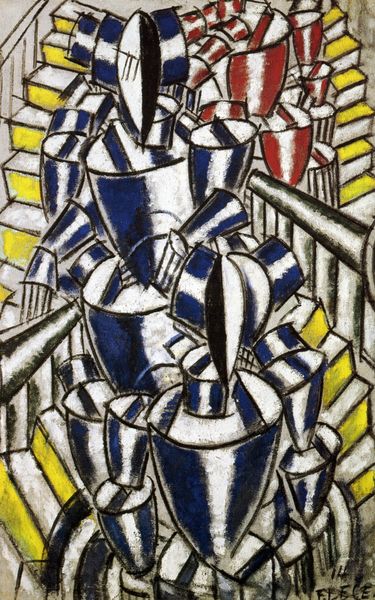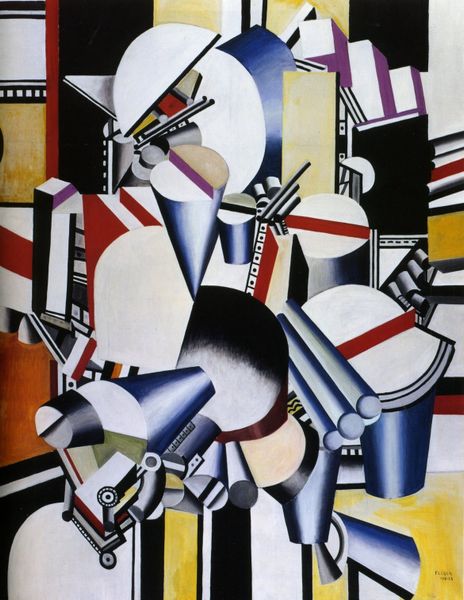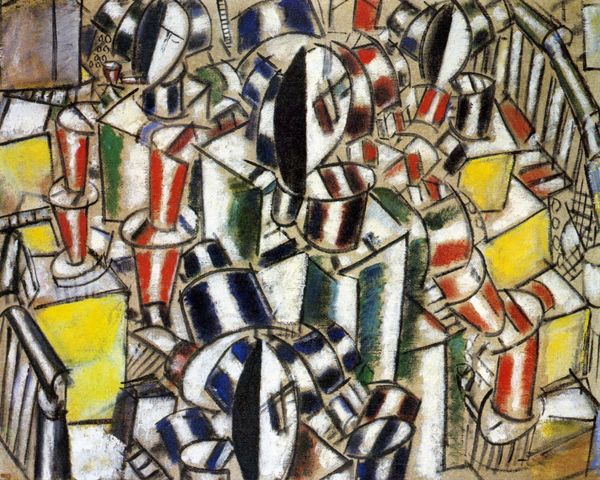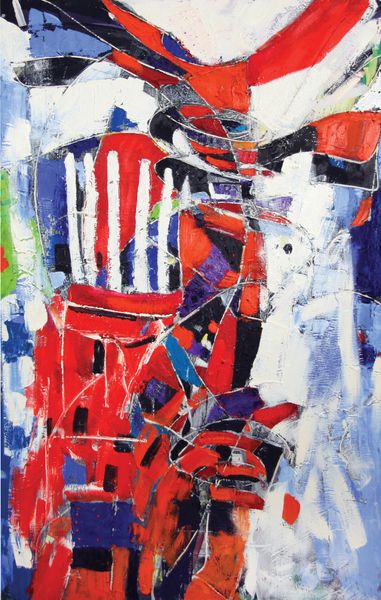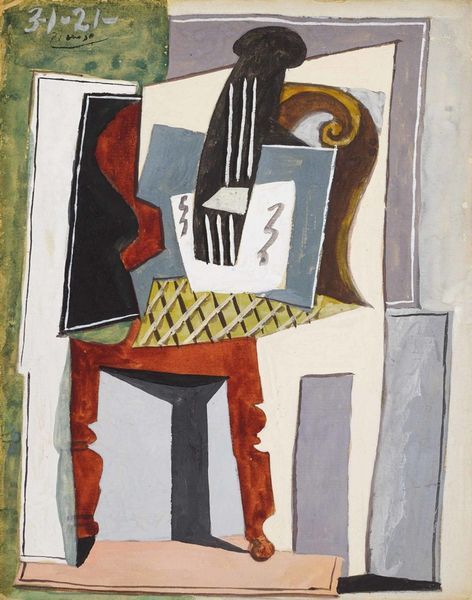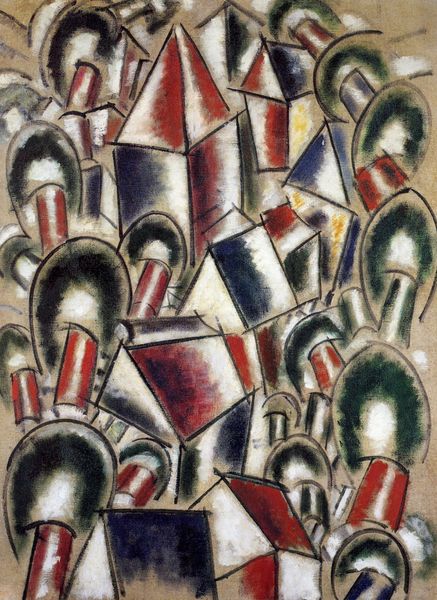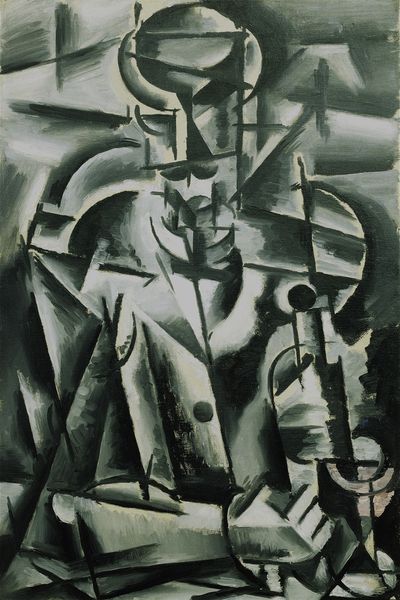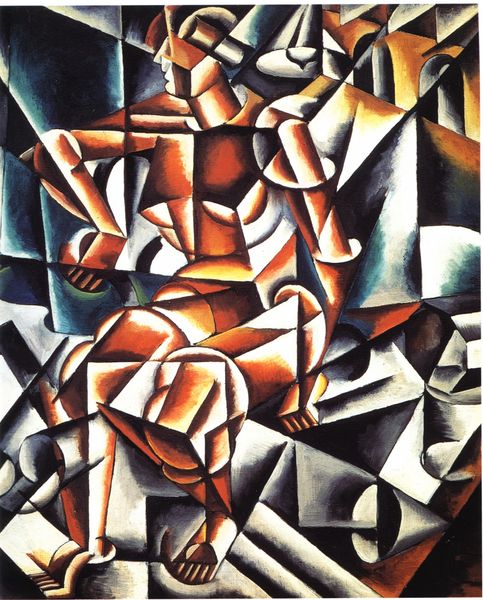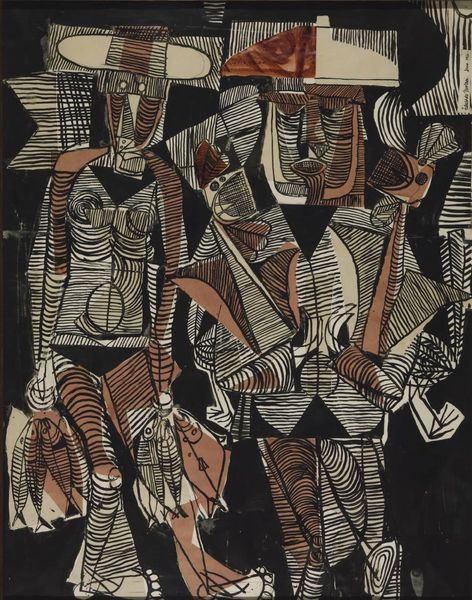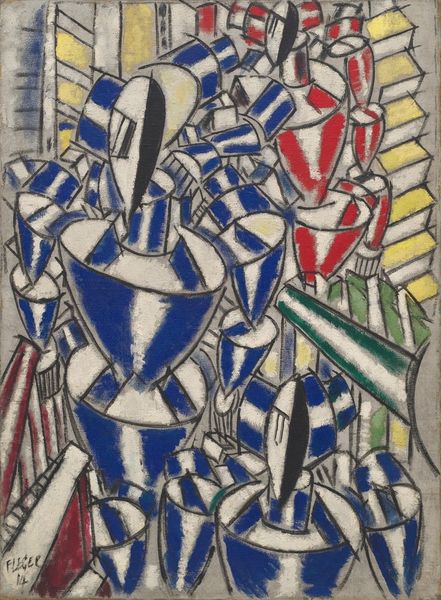
#
abstract expressionism
#
abstract painting
#
graffiti art
#
mural art
#
handmade artwork painting
#
tile art
#
fluid art
#
acrylic on canvas
#
street graffiti
#
paint stroke
Copyright: Public domain US
Editor: Here we have Fernand Léger’s "The Balcony," painted in 1914. It's quite striking with all the geometric figures, almost like figures constructed from machine parts. How do you interpret this work? Curator: This painting exemplifies how early 20th-century artists grappled with the rapidly changing modern world. Consider 1914: mass industrialization, impending war, societal upheaval. Does Léger's fragmented, mechanized depiction of human figures reflect anxieties about the individual’s place within increasingly mechanized societies? How does the painting engage with emerging debates surrounding labor, class, and gender within this rapidly industrializing context? Editor: That's fascinating. I was focused on the figures themselves and didn’t think about it as a reflection of society at large. The red and white stripes almost feel like uniform markings… Curator: Precisely. Léger was very interested in the aesthetic of the machine age. But consider this: these figures are on a "balcony." What does that suggest about spectatorship, privilege, perhaps even detachment? The Balcony as a space implies a separation, raising questions of who has access to observation, and how this positioning informs social dynamics and hierarchies within early 20th century culture. How might class dynamics or social tensions play out in this liminal space? Editor: So it's not just about representing the mechanical, but also about observing and being observed, and how social roles are defined within that process? Curator: Exactly. And notice the lack of clear differentiation between the figures. Léger seems to be exploring themes of conformity and collectivity, concepts ripe for interpretation through socialist and early communist ideology emerging at the time. Is he commenting on the loss of individuality or celebrating the power of collective action? Editor: I’ll never look at balconies the same way! Thanks for showing me how much historical and social context can enrich our understanding of an artwork. Curator: My pleasure! Always remember to question the spaces and figures represented. They’re often far more telling than we initially suspect.
Comments
No comments
Be the first to comment and join the conversation on the ultimate creative platform.
